Ariel Huntmaster
Ariel’s 646ccparallel twin engine was essentially the unit from BSA’s Golden Flash, modified with a new gearbox, clutch and engine covers.
The Huntmaster was a reasonably stylish machine that combined Ariel’s traditional paint scheme with a high standard of finish. The marque was unique in producing models with one, two and four cylinders.
Ariel’s variation on the familiar 650cc parallel twin theme was one of the more successful examples of the badge engineering common in the British motorcycle industry of the 1950s. The Huntmaster, produced when Ariel was a subsidiary of BSA, was a modified version of BSA’s Golden Flash model.
But there were sufficient differences between the two bikes to give them distinctly different appearances and personalities.
Most of Ariel’s effort went into the Huntmaster’s chassis. Its twin-downtube frame was widely regarded as stronger than that of the Golden Flash. Front forks were similar, as BSA had been using Ariel units for years, but the Huntmaster was fitted with rear shock units from Armstrong instead of Girling. The Ariel was finished to the firm’s usual high standard and looked smart in its traditional deep red paintwork.
There were fewer differences in the two models’ 646cc air-cooled, pushrod-operated, singlecamshaft engines. Ariel fitted a new Burman four- speed gearbox and a dry clutch, and made some changes simply to disguise the unit’s BSA origins. The right engine cover was reshaped into a triangular, rather than Y-shaped, form, and the rocker-box and its covers were redesigned. But peak output remained 35bhp at 5600rpm.
Cracking the ton
By the standards of 1954, when the Huntmaster was introduced, that gave good if not outstanding straight-line performance. Top speed was initially just under lOOmph (161km/h), hindered slightly by tall gearing. Ariel lowered the final gear ratio slightly in 1956, after which the bike could just about ‘crack the ton’. The Huntmaster also gave good acceleration through the range, though it was handicapped by typical parallel-twin vibration at high revs.
Handling was good, and combined with the new gearbox to give the Ariel a distinctly different feel to that of its BSA sibling. At 4101b (186kg) the Huntmaster was not particularly light, but it was stable, steered well and was comfortable, especially after Ariel redesigned the seat in 1956. Its drum brakes were reasonably powerful too, and owners soon grew to appreciate the bike’s excellent fuel economy, even when fitted with a sidecar.
The Huntmaster was also impressively reliable. Later versions, especially, had numerous rider- friendly features such as an easily adjusted headlamp and brakes, enclosed final drive chain, plus a rear mudguard that hinged to facilitate rear wheel removal. The bike’s practicality could also be increased by fitting factory-made accessories, which included a tall windscreen, crash-bars, luggage rack and panniers.
The Huntmaster’s performance and versatility were enough to make it reasonably successful, and highly regarded by most who rode one. But thoseassets were not enough to save the model, or to keep Ariel from disaster once the firm undertook a controversial and ultimately suicidal decision to abandon four-stroke production completely.
The company had a proud if occasionally troubled history, having begun building motorbikes around the turn of the century. Ariel had been one of Britain's most important bike manufacturers in the 1930s, and had produced a succession of successful four-strokes, notably the Red Hunter range of singles. The Red Hunter name had also been used for a 500cc twin produced from 1948; and then there was the famous Square Four...
But in 1959, Ariel dropped the Huntmaster and all other four-stroke models to make way for the Leader, a 250cc two-stroke scooter with which the firm’s bosses aimed to change the face of motorcycling. When the Leader failed to win sufficient converts, the firm had nothing to fall back on. In 1963 Ariel production was moved to BSA’s factory, and a few years later ceased for good.
Although the Huntmaster had enough unique features to qualify as a new model, it was essentially an example of the ‘badge engineering ’ that was popular with British manufacturers in the 1950s. Ariel had been part of the giant BSA group.
The Huntmaster's new twin-downtube frame and Armstrong rear shocks gave handling that at least matched that of the BSA Gold Flash on which the Ariel was based. Braking power from the front and rear drums was good by mid-1950s standards, too.
SpecificationAriel FH Huntmaster 650 (1955)
- Engine Air-cooled ohv pushrod four-valve parallel twin
- Capacity 646cc (70 x 84mm)
- Maximum power 35bhp @ 5600rpm
- Transmission Four-speed, chain final drive
- Frame Steel twin downtube
- Suspension Telescopic front; twin shocks rear
- Brakes Drum front and rear
- Weight 4101b (186kg)
- Top speed 100mph (161 km/h)

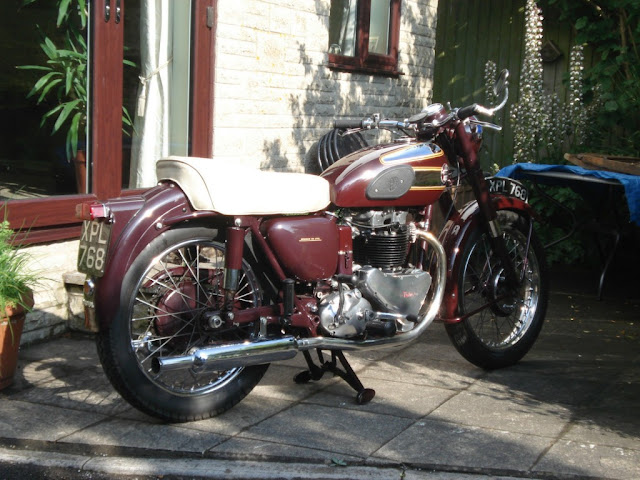

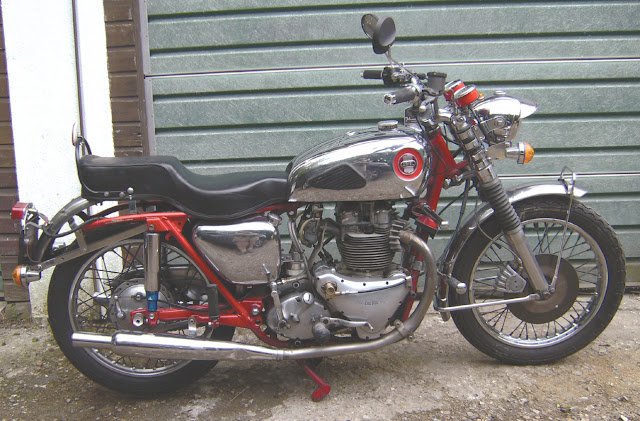
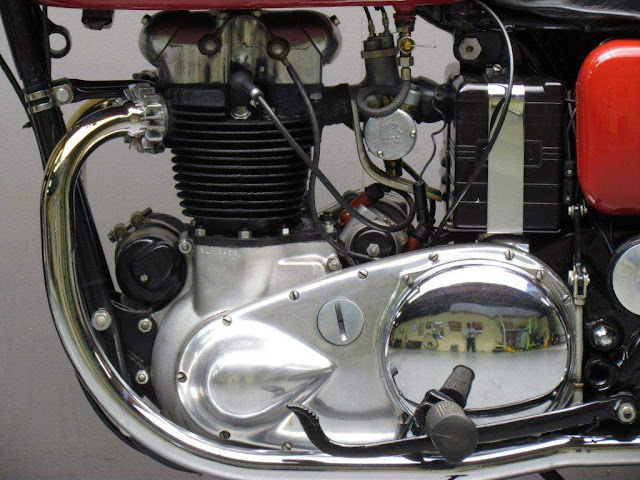

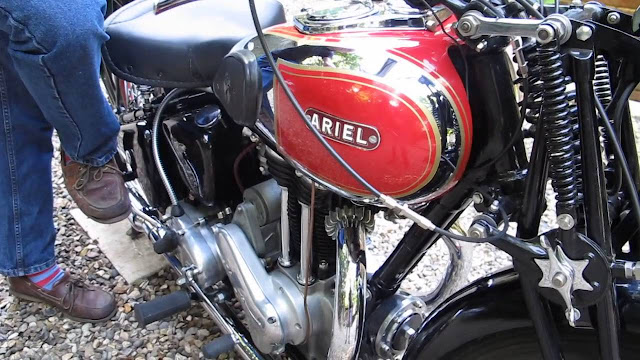
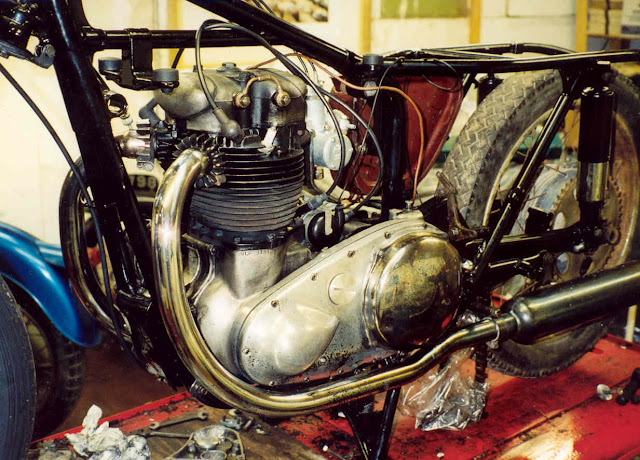










0 comments: